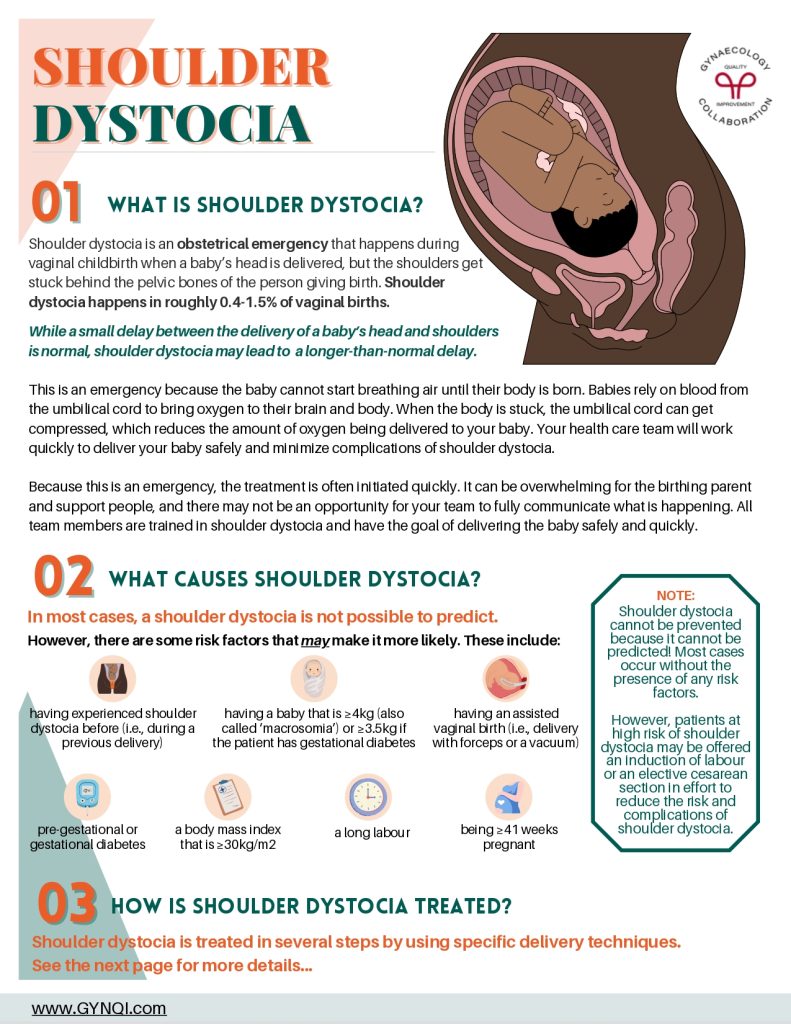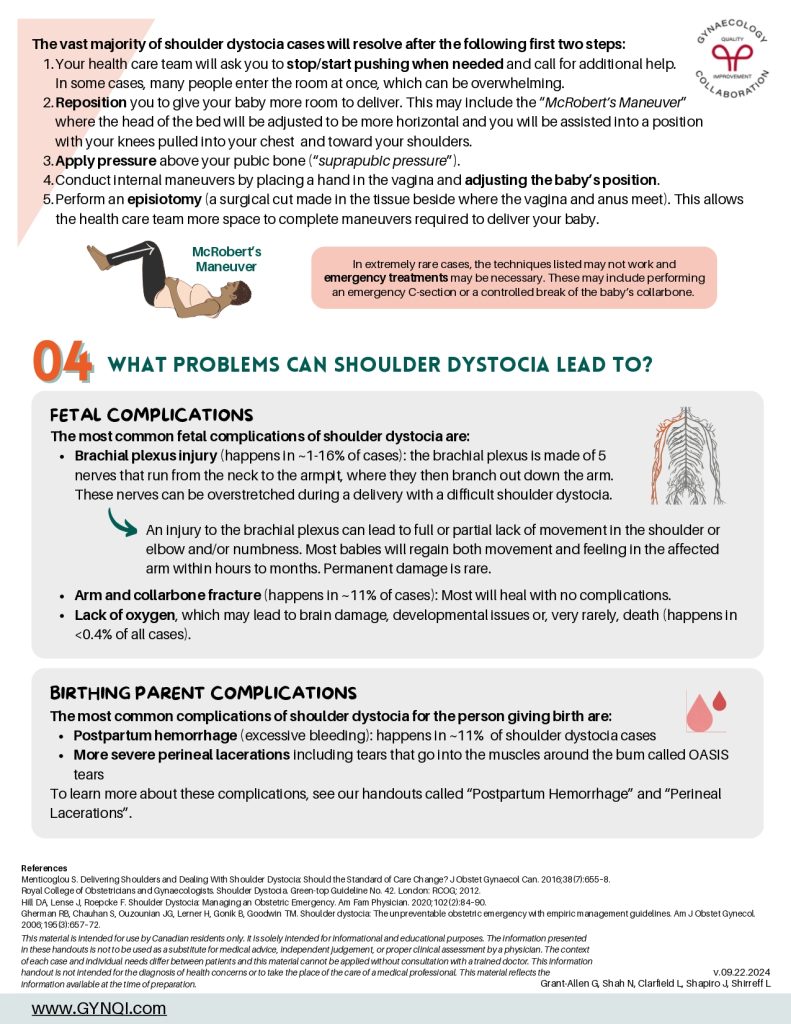
Shoulder Dystocia
01 What Is Shoulder Dystocia?
Shoulder dystocia is an obstetrical emergency that happens during vaginal childbirth when a baby’s head is delivered, but the shoulders get stuck behind the pelvic bones of the person giving birth. Shoulder dystocia happens in roughly 0.4-1.5% of vaginal births.
While a small delay between the delivery of a baby’s head and shoulders is normal, shoulder dystocia may lead to a longer-than-normal delay.
This is an emergency because the baby cannot start breathing air until their body is born. Babies rely on blood from the umbilical cord to bring oxygen to their brain and body. When the body is stuck, the umbilical cord can get compressed, which reduces the amount of oxygen being delivered to your baby. Your health care team will work quickly to deliver your baby safely and minimize complications of shoulder dystocia.
Because this is an emergency, the treatment is often initiated quickly. It can be overwhelming for the birthing parent and support people, and there may not be an opportunity for your team to fully communicate what is happening. All team members are trained in shoulder dystocia and have the goal of delivering the baby safely and quickly.
02 What Causes Shoulder Dystocia?
In most cases, a shoulder dystocia is not possible to predict.
However, there are some risk factors that may make it more likely.
- Having experienced shoulder dystocia before (i.e., during a previous delivery)
- Having a baby that is ≥4kg (also called ‘macrosomia’) or ≥3.5kg if the patient has gestational diabetes
- Having an assisted vaginal birth (i.e., delivery with forceps or a vacuum)
- Pre-gestational or gestational diabetes
- A body mass index that is ≥30kg/m2
- A long labour
- Being ≥41 weeks pregnant
NOTE: Shoulder dystocia cannot be prevented because it cannot be predicted! Most cases occur without the presence of any risk factors.
However, patients at high risk of shoulder dystocia may be offered an induction of labour or an elective cesarean section in effort to reduce the risk and complications of shoulder dystocia.
03 How Is SHoulder Dystocia Treated?
Shoulder dystocia is treated in several steps by using specific delivery techniques.
The vast majority of shoulder dystocia cases will resolve after the following first two steps:
- Your health care team will ask you to stop/start pushing when needed and call for additional help. In some cases, many people enter the room at once, which can be overwhelming.
- Reposition you to give your baby more room to deliver. This may include the “McRobert’s Maneuver” where the head of the bed will be adjusted to be more horizontal and you will be assisted into a position with your knees pulled into your chest and toward your shoulders.
- Apply pressure above your pubic bone (“suprapubic pressure”).
- Conduct internal maneuvers by placing a hand in the vagina and adjusting the baby’s position.
- Perform an episiotomy (a surgical cut made in the tissue beside where the vagina and anus meet). This allows the health care team more space to complete maneuvers required to deliver your baby.
In extremely rare cases, the techniques listed may not work and emergency treatments may be necessary. These may include performing an emergency C-section or a controlled break of the baby’s collarbone.
04 What Problems Can Shoulder Dystocia Lead To?
Fetal Complications
The most common fetal complications of shoulder dystocia are:
- Brachial plexus injury (happens in ~1-16% of cases): the brachial plexus is made of 5 nerves that run from the neck to the armpit, where they then branch out down the arm. These nerves can be overstretched during a delivery with a difficult shoulder dystocia.
- An injury to the brachial plexus can lead to full or partial lack of movement in the shoulder or elbow and/or numbness. Most babies will regain both movement and feeling in the affected arm within hours to months. Permanent damage is rare.
- Arm and collarbone fracture (happens in ~11% of cases): Most will heal with no complications.
- Lack of oxygen, which may lead to brain damage, developmental issues or, very rarely, death (happens in <0.4% of all cases).
Birthing Parent Complications
The most common complications of shoulder dystocia for the person giving birth are:
- Postpartum hemorrhage (excessive bleeding): happens in ~11% of shoulder dystocia cases
- More severe perineal lacerations including tears that go into the muscles around the bum called OASIS tears
To learn more about these complications, see our handouts called “Postpartum Hemorrhage” and “Perineal Lacerations”.




